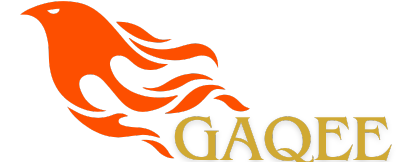Buying a home is a major life milestone, and for most people, it requires securing a mortgage—a type of loan used to finance the purchase of property. Understanding the basics of home loans and mortgages is crucial before diving into the world of homeownership. In this guide, we’ll walk you through the essentials of home loans, how they work, the types of mortgages available, and what to consider when applying for a mortgage.
1. What is a Mortgage?
A mortgage is a loan specifically used to purchase real estate, where the property itself serves as collateral. This means that if you fail to repay the loan, the lender can take ownership of the property through a legal process called foreclosure.
A mortgage consists of two main components:
- Principal: The original amount of money you borrow.
- Interest: The cost of borrowing money, typically expressed as an interest rate. This is a percentage of the principal that you pay in addition to the original amount borrowed.
Mortgages are typically repaid in monthly installments over a long period (usually 15 to 30 years), which includes both principal and interest.
2. How Do Mortgages Work?
When you take out a mortgage, you agree to repay the loan amount (principal) plus interest over a set period, known as the loan term. The amount you borrow is called the loan amount, and your monthly payment is determined based on the loan amount, the interest rate, and the loan term.
Here’s how mortgages typically work:
- You apply for a mortgage with a lender (such as a bank, credit union, or online lender).
- The lender will assess your creditworthiness by looking at your credit score, income, employment history, and existing debts.
- If approved, you’ll receive a loan offer with terms including the interest rate, loan amount, repayment schedule, and any fees.
- You’ll then make regular payments toward the loan, typically on a monthly basis, which include both principal and interest.
- If you don’t make payments as agreed, the lender may take legal action, including foreclosing on the property.
3. Types of Mortgages
There are several types of mortgages available, each with its own advantages and features. The two most common types are fixed-rate mortgages and adjustable-rate mortgages (ARMs).
a. Fixed-Rate Mortgage
A fixed-rate mortgage has an interest rate that remains the same for the entire loan term, meaning your monthly payments will stay consistent over time. This type of mortgage provides stability and predictability, making it a popular choice for many homebuyers.
- Loan Terms: Typically 15 or 30 years.
- Pros: Consistent monthly payments, protection against rising interest rates.
- Cons: Higher interest rates compared to ARMs in the early years.
b. Adjustable-Rate Mortgage (ARM)
An adjustable-rate mortgage (ARM) has an interest rate that can change periodically, typically after an initial fixed period. The rate is usually tied to a benchmark interest rate (such as the LIBOR or Prime Rate) and can go up or down based on market conditions.
- Loan Terms: Common terms are 5/1, 7/1, or 10/1, where the first number refers to the number of years with a fixed rate, and the second number refers to how often the rate adjusts after the initial period.
- Pros: Lower initial interest rates than fixed-rate mortgages, potential for lower payments if rates stay the same or fall.
- Cons: Potential for significant rate increases and higher monthly payments over time.
c. Government-Backed Mortgages
Certain government agencies offer special mortgage programs aimed at helping specific groups of homebuyers. These include:
- FHA Loans: Federal Housing Administration (FHA) loans are designed for first-time homebuyers and those with less-than-perfect credit. They usually require a smaller down payment (as low as 3.5%).
- VA Loans: Veterans Affairs (VA) loans are available to active-duty military members, veterans, and their families. They often don’t require a down payment or private mortgage insurance (PMI).
- USDA Loans: U.S. Department of Agriculture (USDA) loans are aimed at low- to moderate-income buyers purchasing homes in rural or suburban areas. These loans often don’t require a down payment.
d. Interest-Only Mortgages
An interest-only mortgage allows you to make payments on the interest for a certain period (typically 5 to 10 years) without paying down the principal. After the interest-only period ends, you must start paying off the principal as well, which can result in higher monthly payments.
- Pros: Lower initial payments during the interest-only period.
- Cons: Higher payments when the principal starts being repaid, potential for paying more interest over time.
e. Jumbo Mortgages
A jumbo mortgage is a type of loan that exceeds the conforming loan limits set by the Federal Housing Finance Agency (FHFA). These loans are typically used for purchasing high-value homes and are not eligible for purchase by government-sponsored enterprises like Fannie Mae or Freddie Mac.
- Pros: Allows buyers to purchase high-priced homes.
- Cons: Higher interest rates and stricter requirements.
4. Key Mortgage Terms You Should Know
Before applying for a mortgage, it’s important to understand the terminology involved. Here are some common terms:
- Down Payment: The upfront amount you pay toward the home purchase. Typically, down payments range from 3% to 20% of the home’s purchase price.
- Loan Term: The length of time you have to repay the mortgage. Common terms are 15, 20, or 30 years.
- Interest Rate: The cost of borrowing money, expressed as a percentage of the loan amount. Rates can be fixed or variable.
- Annual Percentage Rate (APR): The total cost of the loan, including interest and any fees, expressed as an annual percentage.
- Private Mortgage Insurance (PMI): Insurance that protects the lender in case you default on the loan. PMI is typically required if your down payment is less than 20% of the home’s purchase price.
- Escrow: A separate account where the lender holds funds for property taxes and homeowner’s insurance. The borrower typically makes monthly payments toward these expenses as part of their mortgage payment.
- Amortization: The process of gradually paying down the principal balance of the mortgage over time.
5. How to Qualify for a Mortgage
When applying for a mortgage, lenders evaluate your ability to repay the loan. They typically consider the following factors:
- Credit Score: Your credit score plays a significant role in determining the interest rate you receive. Higher credit scores often result in lower rates.
- Income and Employment: Lenders want to ensure that you have a stable income to make your mortgage payments. They typically require proof of employment, pay stubs, and tax returns.
- Debt-to-Income Ratio (DTI): Your DTI is the ratio of your monthly debt payments to your gross monthly income. Lenders typically prefer a DTI of 36% or lower.
- Down Payment: A larger down payment reduces the lender’s risk and can help you secure a better interest rate. The more you can pay upfront, the less you need to borrow.
- Assets and Savings: Lenders may ask about your savings and investments to ensure you have enough reserves to cover unexpected expenses or emergencies.
6. Mortgage Process Overview
The process of securing a mortgage generally follows these steps:
- Pre-Approval: Before you start house hunting, it’s wise to get pre-approved for a mortgage. This involves the lender assessing your financial situation to determine how much you can afford to borrow.
- House Hunting: Once you know your budget, you can begin looking for a home that fits your needs and preferences.
- Mortgage Application: After selecting a home, you apply for a mortgage with your chosen lender. You’ll provide detailed information about your finances, employment, and assets.
- Loan Approval: The lender will review your application, verify your information, and determine whether to approve or deny your loan.
- Closing: If your loan is approved, you’ll proceed to closing, where you’ll sign the necessary documents, pay any closing costs, and officially take ownership of the home.
Conclusion
A mortgage is a significant financial commitment that can last for decades, but it can also be the key to homeownership. Understanding the different types of mortgages, key terms, and the qualification process is crucial to making an informed decision. Take the time to shop around, compare interest rates, and choose a mortgage that fits your budget and long-term goals. With the right mortgage, you can achieve your dream of owning a home and build equity for your future.

